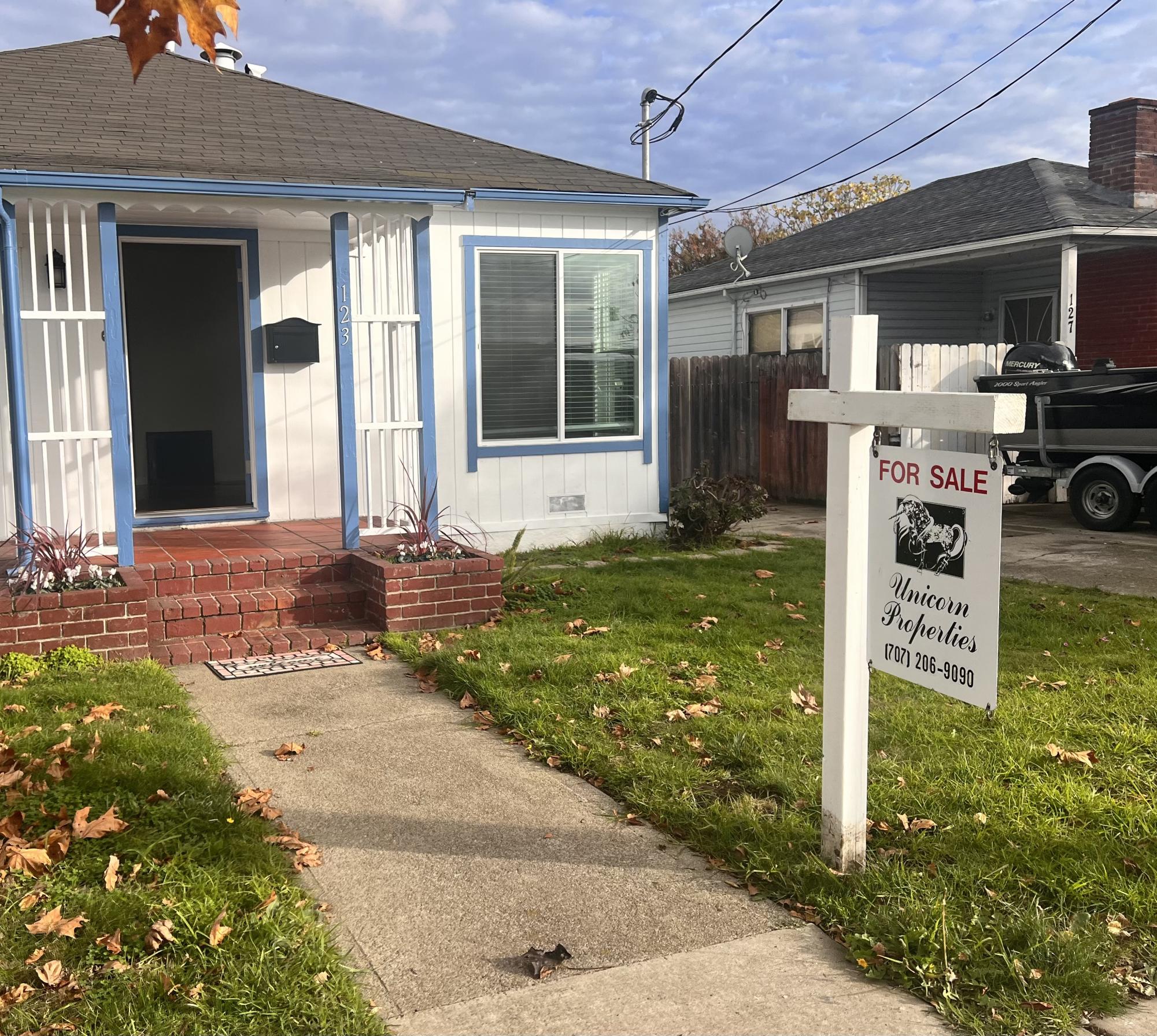Four suitcases and one flight brought Shauna Hyde and her family from Germany to Belmont, California in 2016. They felt alone in their new home, but after years of making friends, volunteering, and driving carpools, they were at the center of a tight-knit community of families they couldn’t imagine leaving.
However, Hyde was a part-time dietician, and her husband didn’t work for a company that paid enough to support the high cost of living in San Mateo County. So, just three years after living in Belmont, the Hydes were forced to pack up their life and move across the country to Barrington, Rhode Island.
The Hyde’s Belmont home is currently listed as sold for $2,600,000. Their new home costs nearly $2,000,000 less, despite being similar in square footage and amenities.
“This house would be over a million in the Bay, but we bought it for just around 700k,” Hyde said, of their Barrington house. “And the cost of living in the Bay for our current lifestyle in Barrington would be double or triple over there.”
They’re Not The Only Ones
Hyde’s story is far from unique. Research from The San Francisco Standard states that San Francisco County was the number one county in the country for population decline between 2020 and 2022. One of the largest reasons for this? House prices are surging at exponential rates, raising the cost of living to an impossibly high level.
According to Norada Real Estate Investments, house prices in the Bay are among the highest in the country, with the median house price in the San Francisco-Oakland-Hayward Metropolitan Statistical Area (MSA) costing over $1 million. And on a national scale, San Mateo County has the highest cost of living.
Expensive housing in the Bay Area is a phenomenon that has been prevalent for decades. Data from the U.S. Federal Housing Finance Agency (FHFA) shows an apparent increase in housing prices since 1982, making the home-buying process inaccessible for many.
HPI is a commonly used method of measuring house prices where higher HPIs correlate to higher home prices, and lower HPIs signal lower prices. S&P’s 500 Index is used to measure the performance of the 500 largest companies within the stock market. S&P data is given as an indicator of the economic success in that particular year.
While some years in the past experienced a decrease in home prices, the last 20 years have seen an overall trend of rapid increase.
Why Is This The Case?
The Bay Area is one of the most desirable places in the world to be, job-wise. It is home to large companies like Apple, Meta, and Google and hosts a budding biotech industry.
“We are in the Bay Area, the center of technology advancement,” said Tina Wu, Ph.D., a Bay Area-based real estate agent. “And not just in the U.S., in the whole world.”
The success of these tech giants attracts millions of people looking for job opportunities. When companies continue to grow, employee salaries increase alongside their success. More wealth leads to a more competitive housing market, as well-off prospective buyers are willing to pay higher prices for a home. This results in household incomes in the Bay Area being much higher than in the rest of the U.S.
The 2021 median household income in San Mateo County was $136,837. A dramatic wealth gap is evident when this amount is compared to the 2021 median household income in the entire U.S., which is $70,784.
However, wealthy residents and tech companies are just two of the factors contributing to rising real estate prices. Despite the Bay Area being home to nine counties and 7,000 square miles, there are simply not enough houses to match the high demand for homes. In fact, San Mateo County housing listings hit an all-time low in December 2022.
Median home price by county in the Bay Area
“More supply must be created to alleviate prices, and a big part of that is there is not enough land to build these houses on,” said Barson Financial Planning Founder David Barson. “The problem is, the number of places for people to live has not kept up with the population. There’s a lot of demand for homes. People want the American dream.”
When demand is high, all aspects of the home-buying process become increasingly difficult. One of the factors impacted by increasing demand is construction costs. Inflated material costs make homes more expensive to build on a physical level. Building materials like lumber, concrete, and construction equipment have risen in price and value.
“When construction costs increase, the (house) price is impacted. The builders need to make their money back and profit,” Barson said.
Other essential elements that come as a result of increased demand are interest rates, mortgage rates, and property taxes. All of these have risen recently, particularly during and after the COVID-19 pandemic.
A Crumbling Community
Considering all of these factors, it is clear why people are forced out of the Bay Area. But the mass exodus of people is leaving a critical effect: it impacts the Bay Area’s strong sense of community. Smaller communities within the large population of the Bay are integral to sustaining the sense of closeness felt — from the close-knit neighborhoods of San Francisco to the smaller towns like Belmont and Woodside.
“There tends to be a more personal nature (in Belmont) because there is less industry and more residential area,” said Belmont School Board trustee Sam Leinbach. “There’s a culture that everyone should be involved and help as much as possible. We all rely on each other and trust each other.”
Think about if you were to uproot your entire life and be forced to leave your closest inner circle. Or say goodbye to the people you trust the most and move somewhere else to start a new life — all because you can’t afford a place to call home.
For families that have built a community, created legacies, and have roots in the Bay Area, being forced to pack up and move out may be devastating for their futures.
“The Bay Area is very different from other places I’ve been,” said Carlmont sophomore Peter Harrison. “There is something unique about the community here.”
Generations of families that have lived in the Bay may be at risk of losing their community should prices continue to increase. A new generation of working and middle-class members will find themselves pushed out or may choose to leave for a more comfortable place.
“Sadly, I’m probably going to have to move out of the Bay Area when I’m an adult, especially because my family’s been here for so long,” Harrison said. “Even if I did make enough money as an adult to live here, it’s just so much easier to move somewhere where I don’t have to worry about high living costs.”
The Hyde’s move out of the Bay Area may seem logical when considering years of stock market evidence and real estate market analysis, but there is something that no amount of data could support – the separation from some of their closest family and friends.
“We became each other’s family,” Hyde said. “We spent Thanksgiving, Easter, and Mother’s Day together. Most people from where we live now already have family, so it’s harder to make the same kind of relationships that we had in the Bay. We’d have people over and never get invited to their house.”
While Leinbach and like-minded others may stand by their community no matter the real estate market, Bay Area residents may start to believe that this no longer qualifies as an important enough factor when weighing the pros and cons of staying in the Bay. Thinking from a purely economic perspective may well become the predominant mindset when planning the future.
“I miss being in California, I do,” Hyde said. “But we were never going to be able to fit into the Bay Area.”





